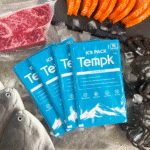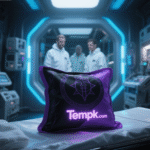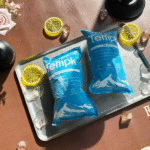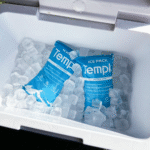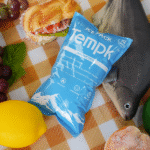Vaccine Cold Chain Best Practices: UN 2025 Guide
Mis à jour en novembre 27 2025 - Vaccine cold chain best practices have evolved with new regulations, technologies and global health challenges. If you handle vaccines, you must protect them from heat and freezing damage. Many vaccines require storage between 2 °C et 8 °C and some need ultra cold conditions. Improper storage can destroy potency. In this guide you’ll learn how to manage cold chain systems, avoid common pitfalls and adopt cutting edge tools. You’ll also see how emerging technologies like IoT sensors and blockchain enhance supply chain transparency. By mastering these practices you can reduce waste, safeguard patients and stay compliant in 2025.
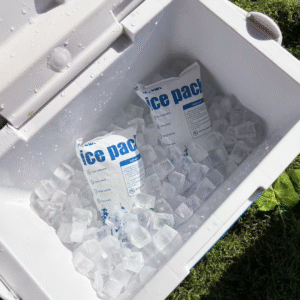
Why is vaccine cold chain integrity critical? Understand why vaccine potency depends on precise temperature control and what happens when the cold chain fails.
How do you set up proper storage and monitoring? Get tips on using digital data loggers, calibrating equipment and training staff.
What are the best practices for transport? Learn to pack vaccines, use freeze preventive carriers and respond to temperature excursions.
Which technologies are transforming cold chain logistics in 2025? Explore blockchain, Capteurs IoT, AI route optimisation and portable cryogenic freezers.
What regulations and trends affect your operations? Stay up to date on DSCSA, Good Distribution Practice and market growth statistics.
Why is Vaccine Cold Chain Integrity Critical?
Protecting potency: the science behind temperature control
Even brief exposure to inappropriate temperatures can destroy vaccine potency. The CDC’s cold chain toolkit notes that a single exposure to freezing temperatures (0 °C or colder) can permanently ruin vaccines. Liquid vaccines with adjuvants are especially freeze sensitive. Inversement, heat exposure degrades live vaccines. Because potency cannot be restored, every stage—from manufacturing to administration—must maintain the recommended temperature range.
Elements of an effective cold chain
An effective cold chain relies on three main elements:
Well trained staff. Personnel must understand storage protocols, emergency procedures and documentation requirements.
Reliable storage and monitoring equipment. Refrigerators should maintain 2 °C–8 °C and freezers –50 °C to –15 °C. Ultra cold freezers for mRNA vaccines must maintain –90 °C to –60 °C. Appareils de surveillance de la température (TMDs) are essential.
Accurate inventory management. Record all vaccines, track expiry dates and rotate stock to use the oldest first.
These elements prevent costly failures. Breaks in the cold chain lead to revaccination and reduced public confidence. A recent news analysis noted that autour 25 % of vaccines are wasted annually due to poor temperature control, highlighting the need for robust systems.
Understanding temperature ranges and vaccine potency
Different vaccine formulations require different temperature ranges. Refrigerated vaccines are generally stored between 2 °C et 8 °C. Traditional frozen vaccines (such as varicella and some influenza formulations) need –50 °C to –15 °C. Ultra cold products—like mRNA based COVID 19 vaccines—require –90 °C to –60 °C.
The CDC’s summary of the Pfizer BioNTech 2024–2025 formula adds that thawed vials can be stored at 2 °C–8 °C jusqu'à 10 weeks and must never be refrozen. Multi dose vials may remain at room temperature (8 °C–25 °C) for a total of 12 hours before puncture. Le 2025 référence rapide from recommends aiming for a 5 °C midpoint in refrigerators and warns that ultra cold formulations, such as certain mpox vaccines, can be refrigerated for limited periods.
| Catégorie de vaccin | Recommended temperature | Pourquoi ça compte pour toi |
| Refrigerated vaccines (Par exemple, DTaP, grippe, VPH) | Maintain between 2 °C et 8 °C, viser 5 °C | Prevents heat damage and preserves antigen structure. Many clinics use household grade units that fluctuate; calibrating and monitoring is essential. |
| Vaccins congelés (Par exemple, varicelle, MMR V) | Store between –50 °C and –15 °C | Freezer units must hold low temperatures; improper freezing or thawing can destroy potency. |
| Vaccins à ARNm ultra froids | –90 ° C à –60 ° C, thawed vials can be refrigerated at 2 °C–8 °C jusqu'à 10 semaines | Requires specialized freezers or portable cryogenic systems. Thawed vials offer longer shelf life but must not be refrozen. |
| Diluents and reconstituted vaccines | Generally stored at 2 ° C - 8 ° C; some may remain at room temperature for short periods | Follow manufacturer instructions. Diluents must not freeze. |
Astuces et conseils pratiques
Always record temperatures twice daily (or use continuous digital loggers) and note minimum and maximum readings.
Label storage units clearly to distinguish between vaccine types and prevent accidental mixing.
Avoid storing vaccines in the door or crisper bins, where temperature variation is greatest. Use water bottles on shelves to stabilise temperature swings.
Never refreeze thawed vaccines. Par exemple, thawed Pfizer BioNTech vials must remain refrigerated and be used within 10 semaines.
Inspect vaccines upon delivery: check for physical damage, correct product, expiry dates and cold chain monitor readings.
Cas réel: UN 2025 field evaluation in Nigeria tested freeze preventive vaccine carriers. The devices prevented freezing, required no extra training and reduced preparation time. Health workers simply placed ice packs into sleeves and delivered vaccines without worrying about freeze damage, demonstrating how design innovations can protect potency.
How to Set Up Proper Storage and Monitoring
The role of temperature monitoring devices (TMDs)
Digital temperature monitoring is the backbone of vaccine storage. The CDC recommends digital data loggers (DDL) for each storage unit. DDLs record temperature data at preset intervals (ideally every 30 minutes) and display current, minimum and maximum readings. Key features to look for include:
Detachable, buffered probes (Par exemple, glycol or glass beads) that reflect actual vaccine temperature rather than air temperature.
Alarms and low battery indicators to alert staff to excursions.
Précision de ±0,5 °C and logging intervals of at least 30 minutes.
Calibration certificates that conform to ISO/IEC 17025 and NIST traceability standards.
Continuous monitoring reduces the risk of undetected temperature excursions. Real time alerts allow staff to transfer vaccines to a backup unit quickly. Data loggers also support audits and DSCSA compliance by providing a 3 year temperature history.
Storage setup and daily practices
Proper unit setup is critical:
Stabilise new refrigerators and freezers for 2–7 days before use and record temperature ranges. Do not store vaccines until the unit maintains stable readings for at least 48 heures.
Set thermostats to the midpoint of the recommended range (autour 5 °C for refrigerators, –30 °C for freezers). This reduces risk of extremes.
Position water bottles or thermal mass on shelves to dampen temperature fluctuations.
Organise inventory by expiry date and rotate stock so older vaccines are used first.
Designate a vaccine coordinator and backup responsible for monitoring, record keeping and responding to alarms.
Training and standard operating procedures (Sops)
Staff training is essential. The CDC advises developing written SOPs for routine storage, handling and emergencies. Training should occur during onboarding, annuellement, when new vaccines are introduced and whenever guidelines change. SOPs should cover:
Receiving deliveries: inspect shipments, verify cold chain monitors and unpack immediately.
Daily temperature monitoring: how to read and interpret DDL data, respond to alarms and document actions.
Emergency response: procedures for power failures, equipment malfunction and natural disasters.
Transport protocols: ordre d'emballage, use of conditioned ice packs or phase change materials, et documentation (see next section).
Regular drills help reinforce skills. Document all training sessions with dates and participants for compliance audits.
Additional monitoring technologies
While DDLs are essential, new monitoring solutions offer enhanced capabilities. According to Identec Solutions, cold chain monitoring systems combine sensors, Appareils IoT, GPS trackers and cloud platforms to provide real time or recorded temperature data across multiple stages. These systems automate alerts and enable immediate corrective actions, reducing waste and improving customer satisfaction.
Temperature and humidity data loggers remain popular for their affordability and reliability, but they often require manual data retrieval. Capteurs sans fil basés sur l'IoT transmit temperature and location data continuously via Wi Fi or cellular networks, eliminating manual downloads. When sensors detect unsafe temperatures, they send automated alerts to operators for quick response.
| Device type | Description | Avantages | Inconvénients | Ce que cela signifie pour vous |
| Digital data logger (DDL) | Battery powered device with buffered probe and memory, records temperature at preset intervals | Accurate, verifiable data history; alarms for excursions | Requires calibration; may not support ultra cold monitoring | Ideal for clinics and pharmacies; maintain calibration certificates. |
| Température & humidity logger | Compact logger for recording environment; data accessed via USB or Bluetooth | Abordable, facile à déployer | Manual retrieval delays discovery of excursions | Good for smaller shipments; supplement with real time monitoring. |
| IoT based wireless sensor | Networked sensor transmitting real time data via Wi Fi, cellulaire ou LoRaWAN | Automated alerts and remote access; enables predictive maintenance | Coût plus élevé; requires network connectivity | Useful for large facilities or long distance transport; plan for power and security. |
| RFID temperature sensor | RFID tag with temperature probe; scanned at checkpoints | Contactless data collection; integrates with inventory tracking | Requires RFID infrastructure and suffers interference | Suitable for warehouses; reduces manual errors. |
Tips for your facility
Invest in two monitoring devices per unit (one active, one backup) to ensure continuous data collection.
Program alert thresholds slightly tighter than official ranges to act before actual excursions occur.
Review and analyse temperature data weekly to detect trends and adjust equipment before problems arise.
Schedule calibration every 2–3 years or after device drops or battery replacement.
Intégrez des capteurs aux tableaux de bord cloud to allow remote monitoring on mobile devices, increasing responsiveness.
Cas réel: A US health network integrated IoT sensors and predictive analytics into its vaccine logistics in 2025. When sensors detected rising temperatures in a delivery truck due to traffic delays, the system automatically re routed the vehicle and pre cooled an alternate storage unit. The shipment arrived within tolerance, preventing wastage and illustrating how real time data can avert losses.
Maintaining Cold Chain Integrity During Transport
Packing and transport fundamentals
Transport is a vulnerable stage. To maintain temperatures:
Pre condition ice packs: For refrigerated vaccines, freeze cold packs and allow them to sweat so the surface temperature is above 0 °C before packing to prevent freezing sensitive vials.
Layer packing materials: Place frozen water bottles or ice packs at the bottom, insert a cardboard or foam barrier, then place vaccine trays on top, followed by more cold packs.
Remplir l'espace vide with crumpled paper or bubble wrap to reduce air pockets that accelerate warming.
Utiliser des conteneurs isothermes validated for the temperature range and transit time. Avoid placing shipping boxes inside storage units, as shipping cool packs may make vaccines too cold.
Include a temperature monitor in each shipment (Par exemple, a cold chain monitor or digital data logger) and record readings upon receipt.
Always document the time of packing, departure, arrival and temperature readings. Use the recorded data to verify that conditions remained within range during transit.
Freeze preventive vaccine carriers
Traditional vaccine carriers are prone to over freezing when ice packs are placed directly against vials. Le Clinton Health Access Initiative evaluated new freeze preventive vaccine carriers (FPVCs) in Nigeria. The devices prevented cold or freeze exposure that could degrade potency, required no special intervention, reduced condensation and shortened preparation time. Additional features included backpack straps, digital temperature displays and protective sleeves for ice packs. The study concluded that FPVCs provide effective freeze protection and reduce training burden. WHO has published guidance on selecting and commissioning these carriers.
When transporting vaccines, consider these innovations:
Matériau à changement de phase (PCM) packs: PCMs maintain specific temperatures without freezing the payload. They are ideal for freeze sensitive vaccines.
Congélateurs cryogéniques portables: Pour les produits ultra froids, portable freezers maintain –80 °C to –150 °C even in remote areas.
Solar powered refrigerators: In areas with unreliable power, solar direct drive refrigerators and freezers are WHO prequalified solutions, offering consistent cooling without external electricity.
Response to temperature excursions
Despite precautions, excursions may occur. Your emergency plan should include:
Immediate relocation: Transfer vaccines to a backup unit that maintains the correct temperature.
Preservation first: Do not discard vaccines until you consult the manufacturer or health authority. Some vaccines remain viable after short excursions.
Document and quarantine: Record the date, temps, temperature and duration of the excursion. Quarantine the affected vaccines separately until disposition is decided.
Root cause analysis: Investigate why the excursion occurred (Par exemple, door left open, panne de courant) and update SOPs to prevent recurrence.
Cas réel: Pendant le déploiement du COVID 19, logistics providers used insulated containers with real time sensors to maintain required temperatures. Sensors alerted drivers to deviations, prompting immediate corrective action. This combination of packaging and technology protected vaccine quality.
Leveraging Technology and Innovations in 2025
The cold chain is rapidly adopting digital innovations that enhance visibility, automation and sustainability. Here are the major trends for 2025.
Blockchain pour une traçabilité de bout en bout
Blockchain records every transaction in an immutable, tamper proof ledger. En pharmacie, blockchain ensures transparent and tamper proof tracking of shipment data. Température en temps réel, humidity and location logs can be shared with stakeholders, building trust and simplifying audits. By eliminating data manipulation, blockchain helps meet regulatory requirements and combats counterfeiting..
Solar powered cold storage units
Power instability is a major challenge in rural regions. Solar powered refrigerators and freezers provide reliable temperature control without grid electricity. Solar cold storage reduces energy costs and enables vaccine delivery to remote areas. They also align with sustainability goals and can pair with IoT sensors for monitoring.
Capteurs intelligents compatibles IoT
IoT sensors collect and transmit temperature and location data in real time, eliminating manual data collection. When sensors detect unsafe conditions, they automatically alert users via text or apps. GPS enabled sensors also provide real time position tracking, ensuring safe and timely delivery. These devices reduce operational risk and improve efficiency.
Intelligence artificielle (IA) for route optimisation
AI uses real time traffic and weather data to plan optimal routes, reducing delays and fuel consumption. Predictive analytics combine historical and live sensor data to forecast temperature excursions. This allows operators to act before vaccines are compromised. AI also supports predictive maintenance, scheduling equipment service before failures occur.
Congélateurs cryogéniques portables
New portable cryogenic freezers maintain –80 °C à –150 °C in challenging environments. They enable safe transport of cell and gene therapies and advanced biologics that require extremely low temperatures. Real time tracking and alerts protect products during transit.
Emballages et matériaux durables
Growing environmental awareness is driving emballage durable. Reusable insulated containers, biodegradable thermal wraps and recyclable cold packs reduce waste and carbon emissions. The pharmaceutical cold chain packaging market was valued at USD 17.93 milliards en 2024 et devrait atteindre USD 63.30 milliards 2033. Passive packaging solutions (using insulation and phase change materials without active refrigeration) prise à propos 72.5 % part de marché. Choosing eco friendly materials aligns with ESG goals and may reduce long term costs.
Croissance du marché et investissement
The global cold chain pharma market grew from USD 8.85 milliards en 2024 en USD 10.04 milliards en 2025 et devrait atteindre USD 18.20 milliards 2030. Investments in cell and gene therapies demand ultra low temperatures and reliable logistics. Analysts also project the wider cold chain monitoring market to grow at a 16.6 % TCAC, reaching around USD 10.2 milliards 2026, driven by stringent regulations, globalization and advancements in IoT technologies.
Technology comparison and benefits
| Innovation | Key function | Bénéficiez pour vous | Considérations pratiques |
| Chaîne de blocs | Immutable ledger for shipment data | Ensures data integrity, simplifies audits and combats counterfeiting | Requires stakeholder collaboration and secure implementation. |
| Capteurs IoT & GPS | Surveillance de la température en temps réel, humidité et emplacement | Immediate alerts prevent excursions; improves route visibility | Needs connectivity and robust cybersecurity. |
| AI route optimisation | Analyse le trafic, weather and historical data to optimise deliveries | Reduces delays and predicts temperature risks | AI tools require quality data and integration with logistics systems. |
| Congélateurs cryogéniques portables | Maintain temperatures as low as –150 °C | Enables transport of advanced biologics; real time tracking prevents losses | Coût élevé; limited battery life; requires training. |
| Stockage à énergie solaire | Uses solar energy to run refrigerators and freezers | Reliable cold chain in regions with unstable power; reduces energy costs | Initial installation costs and dependence on sunlight. |
| Emballage durable | Reusable boxes, emballages biodégradables, recyclable gel packs | Réduit les déchets, supports ESG goals, may lower lifecycle costs | Requires investment and proper return logistics. |
Real world applications and tips
Implement IoT sensors gradually. Begin with high value shipments or critical storage units and expand as you build experience.
Use blockchain for high risk routes or regulatory audits where transparent records are critical.
Adopt AI route optimisation software that integrates with traffic and weather data to reduce transit time and fuel use.
Investissez dans des emballages réutilisables with validated insulation, and plan for cleaning and return logistics.
Consider solar direct drive units in clinics or warehouses with unreliable power sources.
Explore freeze preventive carriers for outreach programs to protect freeze sensitive vaccines.
Cas réel: Dans 2025 a Nordic logistics provider launched the Pack Nordique Express, a reusable container with irreversible temperature indicators. Combined with AI based route planning, the pack reduced freight costs and ensured compliance. This illustrates how packaging and software innovations can work together to enhance performance.
Regulatory Compliance and Training
Understanding DSCSA and Good Distribution Practice (PIB)
Aux États-Unis, le Loi sur la sécurité de la chaîne d'approvisionnement en médicaments (DSCSA) mandates interoperable, electronic systems for tracing prescription drugs across the supply chain. While DSCSA primarily targets pharmaceuticals, vaccine distributors often follow its traceability requirements. Par 2024 the DSCSA requires dispensers to verify product identifiers and maintain transaction information. Blockchain and digital data systems support compliance by providing a secure audit trail.
Globalement, Bonne pratique de distribution (PIB) guidelines set standards for storing and transporting medicinal products. GDP demands:
Qualified storage facilities and equipment (with validated temperature control).
Written procedures for all operations (ordering, stockage, transport, nettoyage).
Staff training and hygiene measures.
Documentation and record retention for each batch or shipment.
Following GDP ensures product quality and reduces liability. Because regulations evolve, subscribe to health authority updates and review manufacturer inserts regularly.
Staff training and competency
Professional development strengthens your E E A T (Expérience, Compétence, Authority, Confiance). Provide hands on training in:
Vaccine handling protocols: from receiving deliveries to administering doses.
Temperature monitoring systems: interpreting DDL readouts, uploading data and responding to alerts.
Procédures d'urgence: using backup generators, transferring stock and documenting excursions.
Exigences réglementaires: DSCSA, PIB, local immunisation programme guidelines.
Encourage a culture of continuous improvement. Document all training sessions and keep SOPs accessible near storage units. Provide annual refreshers and updates when new vaccines or equipment are introduced.
Suggestions de liens internes
To deepen user engagement and improve on page SEO, consider linking to related topics within your site, tel que:
Logistique de la chaîne du froid pharmaceutique – explore packaging choices, shipping lanes and risk management strategies.
Temperature mapping and validation – learn how to perform routine mapping to identify hot and cold spots.
Digital data logger selection guide – choose the right TMD with calibration and accuracy considerations.
Sustainable cold chain packaging solutions – compare materials, coût et impact environnemental.
Freeze preventive vaccine carriers and case studies – see real world examples and guidance for selection.
2025 Vaccine Cold Chain Trends and Market Insights
Aperçu de la tendance
The cold chain landscape is changing rapidly. Major trends in 2025 inclure:
Expansion of biologics and mRNA vaccines: Growing demand for precision therapies requires ultra low storage temperatures and reliable logistics.
Intégration de l'IoT, blockchain et IA: Surveillance en temps réel, secure data sharing and predictive analytics improve efficiency and compliance.
Rise of sustainable packaging: Markets are shifting toward reusable and recyclable materials, driven by environmental concerns and regulatory pressures.
Investment growth: The global cold chain pharma market is projected to reach USD 18.20 milliards 2030, while the cold chain monitoring market may grow to over USD 10.2 milliards 2026.
Dynamique régionale: North America holds over 36 % market share due to strong biopharma industries and strict FDA regulations. L’Asie-Pacifique est la région à la croissance la plus rapide, propelled by generic drug manufacturing and government vaccination programmes.
Latest progress in 2025
Adoption de la blockchain: More manufacturers are piloting blockchain networks to track vaccines from manufacturing to clinics, improving supply chain integrity.
AI enhanced logistics: Predictive analytics is used to plan shipments around weather patterns and minimise delays, reducing risk of temperature excursions.
Portable cryogenic solutions: Start ups are launching lightweight freezers capable of maintaining –80 °C in transit, making last mile delivery of gene therapies feasible.
Innovations en matière d'emballage durable: Companies are introducing biodegradable insulation, reusable shippers and vacuum insulated panels, cutting carbon footprint and meeting corporate social responsibility goals.
Market insights and user implications
The expanding cold chain market offers opportunities and challenges. Investment in monitoring solutions and training is no longer optional; it’s a competitive necessity. As more therapies require ultra low temperatures, expect increased demand for specialised equipment. Entre-temps, environmental regulations may require a shift toward reusable or recyclable materials. Staying informed about regulatory deadlines, such as DSCSA final implementation, will help you remain compliant and avoid disruptions.
FAQ
Question 1: What temperature should I set my vaccine refrigerator?
Set the thermostat so that the temperature consistently stays between 2 °C et 8 °C, aiming for about 5 °C. Monitor daily and adjust gradually. Use water bottles to stabilise fluctuations.
Question 2: Can I refreeze a thawed vaccine?
Non. Once thawed, vaccines must not be refrozen. Par exemple, Pfizer BioNTech vials thawed in the refrigerator can be stored at 2 °C–8 °C jusqu'à 10 semaines but cannot be refrozen.
Question 3: How do I respond when my temperature alarm goes off?
Check the door seal, power supply and thermostat. If the temperature remains out of range, transfer vaccines to a backup unit and consult your SOPs. Document the excursion and contact your immunisation programme or manufacturer for guidance.
Question 4: Are household refrigerators suitable for vaccine storage?
Household units often have uneven temperatures and lack accurate thermostats. Use purpose built medical refrigerators or certified vaccine units to ensure stable 2 °C–8 °C conditions.
Question 5: What is the role of blockchain in vaccine logistics?
Blockchain creates an immutable record of each shipment, preventing data manipulation and improving transparency. It enhances traceability, supports regulatory compliance and helps verify product authenticity.
Suggestion
Principaux à retenir
Strict temperature control is non negotiable. Refrigerated vaccines must stay between 2 °C et 8 °C, frozen vaccines at –50 °C to –15 °C and ultra cold products at –90 °C to –60 °C. Freeze exposure can destroy potency.
Use digital data loggers and IoT sensors. Continuous monitoring with alarms and buffered probes prevents excursions and provides traceability.
Invest in training and SOPs. Well trained staff, clear protocols and emergency plans are essential.
Adopt innovative technologies. Chaîne de blocs, IA, solar powered units and portable cryogenic freezers improve reliability, efficacité et durabilité.
Stay current on trends and regulations. The cold chain market is growing quickly; monitor DSCSA, GDP and environmental standards to remain compliant and competitive.
Prochaines étapes réalisables
Assess your facility: Use a readiness checklist to verify that storage units hold appropriate temperatures and that monitoring devices are calibrated. Identify vaccines requiring ultra cold storage and plan accordingly.
Upgrade monitoring: If you’re still using manual thermometers, invest in DDLs or IoT sensors for real time alerts and data logging. Set up cloud dashboards for remote visibility.
Enhance training: Update SOPs and conduct refresher training for all staff. Include emergency response drills and documentation protocols.
Plan transport improvements: Evaluate freeze preventive carriers, portable cryogenic freezers and sustainable packaging options. Pilot new technologies with critical shipments.
Evaluate compliance: Review DSCSA and GDP requirements. Implement blockchain or other traceability tools where appropriate to prepare for audits.
À propos Rotation
Contexte de l'entreprise: Tempk is a leader in cold chain packaging and monitoring solutions for pharmaceuticals and biologics. Nous concevons des caisses isothermes, phase change packs and smart containers that maintain temperature ranges from 2 °C à –150 °C. Our solutions are certified to NSF/ANSI 456 and support DSCSA compliance. Notre R&D team continually explores sustainable materials and digital integration, delivering products like the Pack Nordique Express with real time sensors and irreversible temperature indicators.
Appel à l'action: Ready to strengthen your vaccine cold chain? Contact Tempk’s experts for tailored packaging, monitoring systems or a compliance audit. We’re here to help you safeguard sensitive products and meet 2025’s regulatory challenges.

















